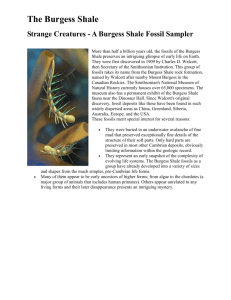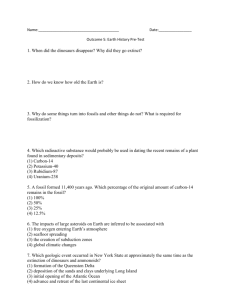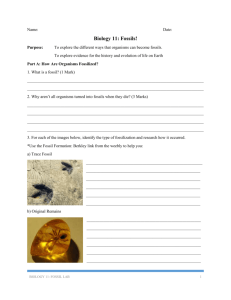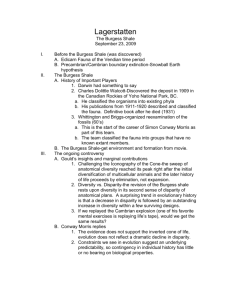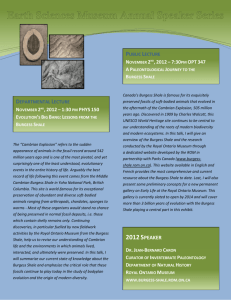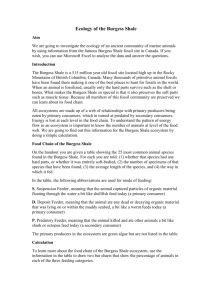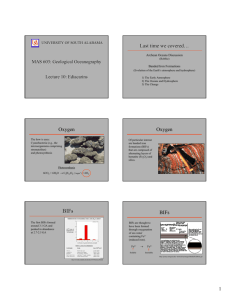2.1 and 2.2 Ancient Seas
advertisement
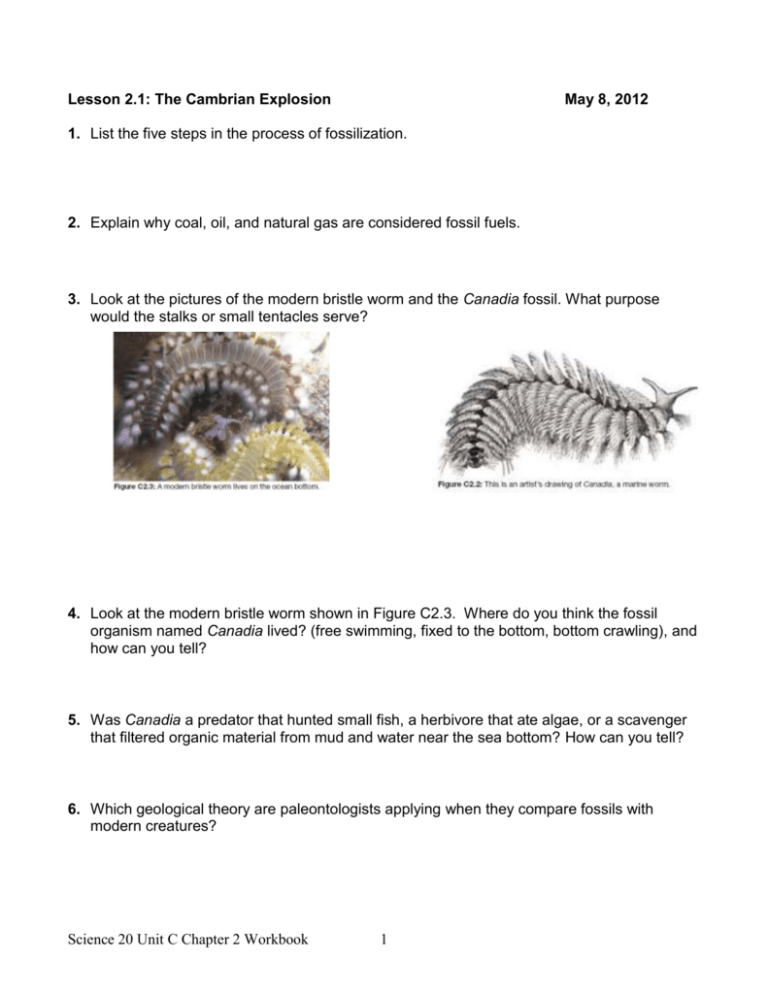
Lesson 2.1: The Cambrian Explosion May 8, 2012 1. List the five steps in the process of fossilization. 2. Explain why coal, oil, and natural gas are considered fossil fuels. 3. Look at the pictures of the modern bristle worm and the Canadia fossil. What purpose would the stalks or small tentacles serve? 4. Look at the modern bristle worm shown in Figure C2.3. Where do you think the fossil organism named Canadia lived? (free swimming, fixed to the bottom, bottom crawling), and how can you tell? 5. Was Canadia a predator that hunted small fish, a herbivore that ate algae, or a scavenger that filtered organic material from mud and water near the sea bottom? How can you tell? 6. Which geological theory are paleontologists applying when they compare fossils with modern creatures? Science 20 Unit C Chapter 2 Workbook 1 Use the following picture to answer the questions that follow. A more clear version is on page 333 of your textbook. 7. Label a trilobite, a Canadia, and a Hallucigenia in Figure C2.9. 8. Layers of microscopic silt and clay particles are often deposited as sediment at the mouths of rivers or from mud avalanches. These sediments eventually result in shale. a. Identify the source of the fine silt and clay particles that formed the Burgess Shale. b. Describe the significance of the silt and clay in the preservation of the Burgess Shale fossils. 9. Fossils in the Burgess Shale fossils are found in a variety of positions: some upside down, some vertical. Why are the fossils of the Burgess Shale not arranged in an orderly way, such as lying on their sides? Science 20 Unit C Chapter 2 Workbook 2 Lesson 2.2: A Billion-Dollar Reef 10. Refer to the “Geological Time Scale” on your formula sheet. How long did the Ordovician Period last? 11. During the Ordovician Period, it is thought that land plants began to contribute to the levels of atmospheric oxygen. You will need to recall key ideas from previous science courses to answer the parts of this question. a. Describe the process by which plants produce oxygen as a by-product. Include a chemical equation to aid your description. b. Some geologists believe it is not accidental that evidence from the fossil record suggests the first amphibians appeared on land many years after the appearance of the first land plants. It has been suggested that this time period was necessary to provide enough oxygen to help produce an atmospheric ozone layer. Explain why an atmospheric ozone layer would be important to early amphibians. 12. During the 140 million years from the beginning of the Ordovician Period to the end of the Devonian Period, Alberta was mostly submerged below a warm tropical sea. Explain the significance of this time period to the creation of Alberta’s petroleum reserves. 13. Characteristics of ocean waters off the coast of the Bahamas are thought to be similar in many ways to tropical waters that once covered Alberta. Explain why petroleum cannot be extracted from the bottom of the shallow waters that surround the Bahamas. Science 20 Unit C Chapter 2 Workbook 3 APPLICATION The speed of a seismic wave depends mostly upon the density of material the wave is travelling through. In general, the denser the material, the faster the wave travels. The following table represents typical densities for crude oil—a common form of petroleum—and a few types of rock. a. If the seismic wave is capable of travelling through all of these materials, rank the materials from slowest to fastest. When the seismic wave encounters a boundary between two layers of rock with different densities, the sudden change in speed can cause a reflection to occur. It is usually the case that the larger the speed difference between materials at the boundary, the stronger the reflection. The reflected part of the seismic wave is redirected toward the surface. b. Which combination of materials would produce the strongest reflection? c. Which combination of materials would produce the weakest reflection? Science 20 Unit C Chapter 2 Workbook 4
